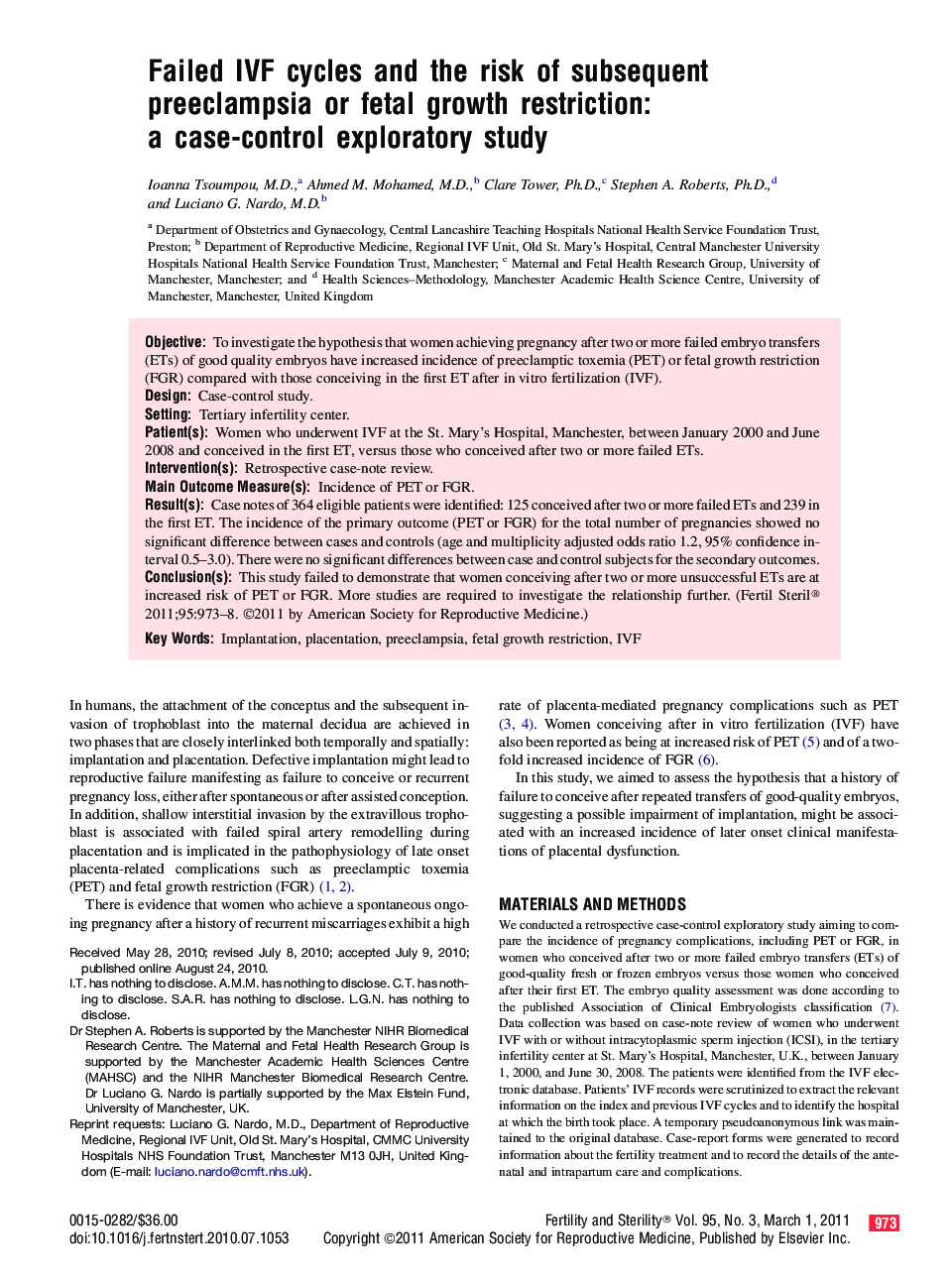| Article ID | Journal | Published Year | Pages | File Type |
|---|---|---|---|---|
| 3932403 | Fertility and Sterility | 2011 | 6 Pages |
ObjectiveTo investigate the hypothesis that women achieving pregnancy after two or more failed embryo transfers (ETs) of good quality embryos have increased incidence of preeclamptic toxemia (PET) or fetal growth restriction (FGR) compared with those conceiving in the first ET after in vitro fertilization (IVF).DesignCase-control study.SettingTertiary infertility center.Patient(s)Women who underwent IVF at the St. Mary's Hospital, Manchester, between January 2000 and June 2008 and conceived in the first ET, versus those who conceived after two or more failed ETs.Intervention(s)Retrospective case-note review.Main Outcome Measure(s)Incidence of PET or FGR.Result(s)Case notes of 364 eligible patients were identified: 125 conceived after two or more failed ETs and 239 in the first ET. The incidence of the primary outcome (PET or FGR) for the total number of pregnancies showed no significant difference between cases and controls (age and multiplicity adjusted odds ratio 1.2, 95% confidence interval 0.5–3.0). There were no significant differences between case and control subjects for the secondary outcomes.Conclusion(s)This study failed to demonstrate that women conceiving after two or more unsuccessful ETs are at increased risk of PET or FGR. More studies are required to investigate the relationship further.
